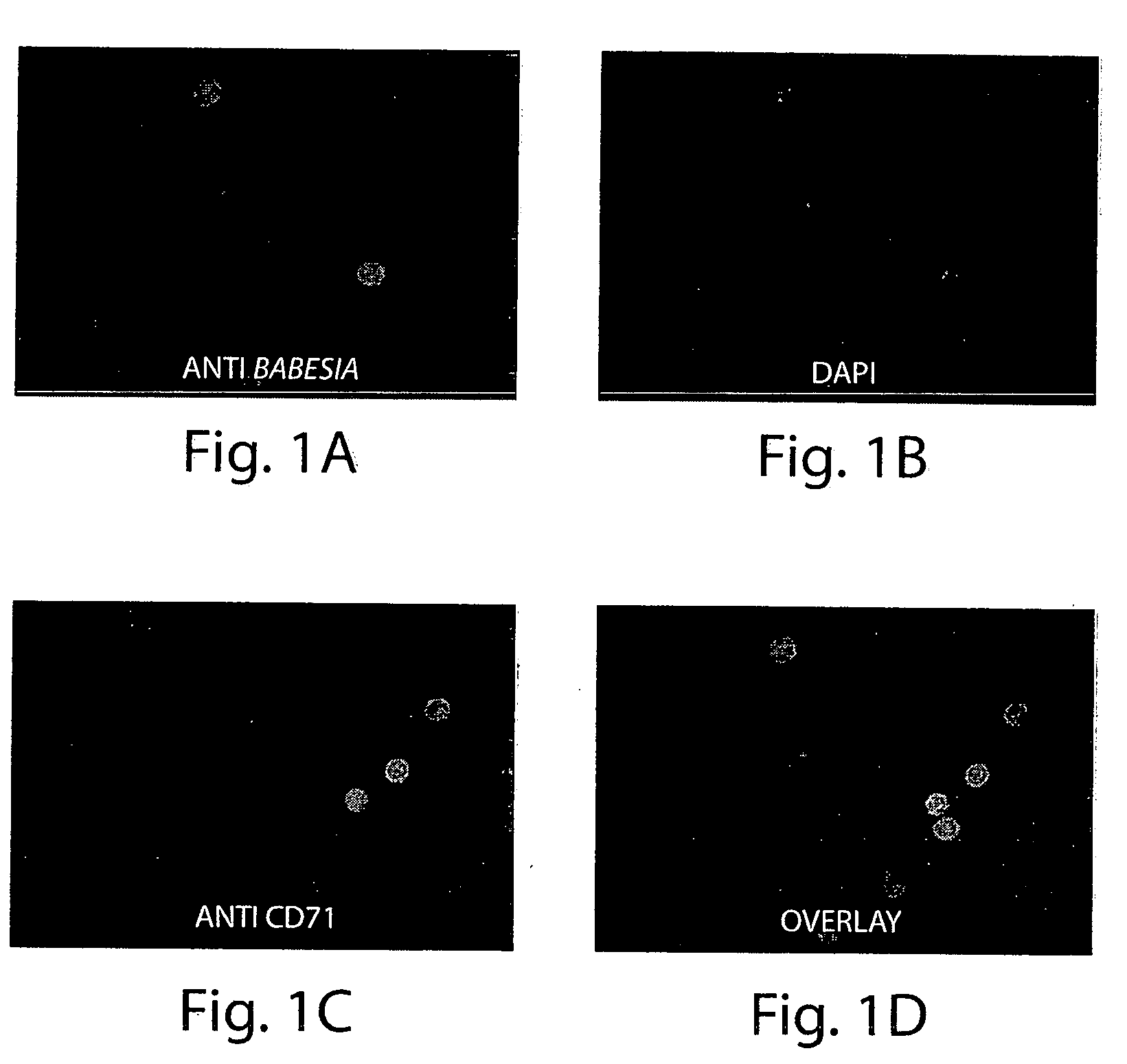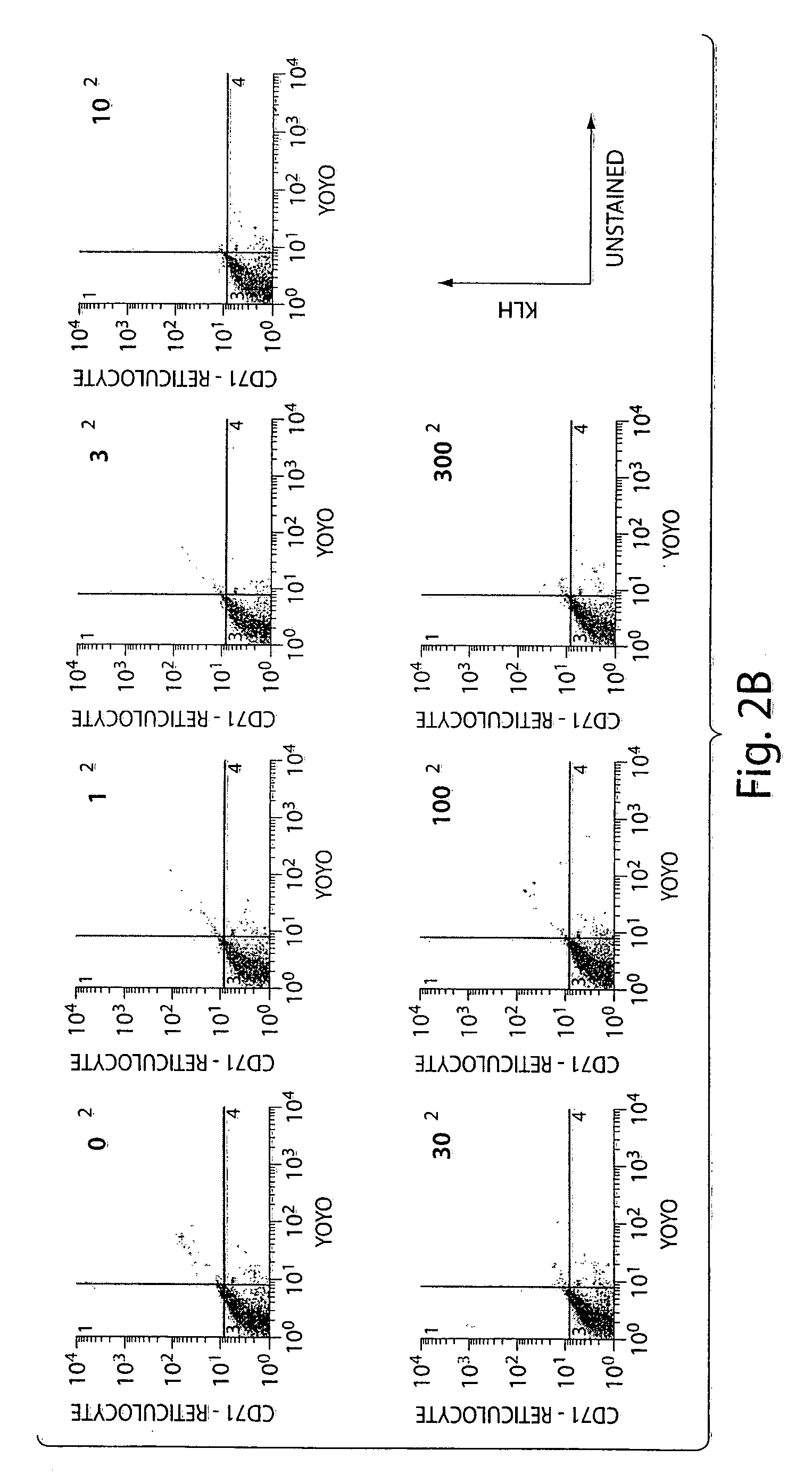Methods for detection of pathogens in red blood cells
a technology of red blood cell and pathogen detection, applied in the field of diagnosis of infections, can solve the problems of rare human babesiosis, but often severe problems
- Summary
- Abstract
- Description
- Claims
- Application Information
AI Technical Summary
Benefits of technology
Problems solved by technology
Method used
Image
Examples
example 1
Demonstration of Preferential Invasion of Murine Erythrocytes by Babesia microli
[0039] The following materials and methods were used to generate the data described in Example 1.
[0040] Mice. DBA / 2 and B10.D2 mice were purchased from Jackson Laboratories (Bar Harbor, Me.). B10.D2 mice are C57BL / 10 mice that are congenic for the MHC locus (haplotype H2d) obtained from the DBA / 2 strain. BALB / cBy mice were purchased from the National Institute on Aging whereas C.B-17 and C.B-17.scid mice were purchased from Taconic, Inc. (Germantown, N.Y.). C.B-17 mice are BALB / c mice congenic for the immunoglobulin heavy chain Ighb allele obtained from the C57BL / Ka strain. In addition to the Ighb allele, C.B-17.scid mice carry the spontaneous mutation scid, which prevents differentiation of T and B cells. All mice were maintained under specific-pathogen free conditions in clean well-tendered quarters. Mice were provided with water and chow ad libitum.
[0041] Infection of mice with Babesia microti. C.B...
PUM
| Property | Measurement | Unit |
|---|---|---|
| concentrations | aaaaa | aaaaa |
| temperature | aaaaa | aaaaa |
| volume | aaaaa | aaaaa |
Abstract
Description
Claims
Application Information
 Login to View More
Login to View More - R&D
- Intellectual Property
- Life Sciences
- Materials
- Tech Scout
- Unparalleled Data Quality
- Higher Quality Content
- 60% Fewer Hallucinations
Browse by: Latest US Patents, China's latest patents, Technical Efficacy Thesaurus, Application Domain, Technology Topic, Popular Technical Reports.
© 2025 PatSnap. All rights reserved.Legal|Privacy policy|Modern Slavery Act Transparency Statement|Sitemap|About US| Contact US: help@patsnap.com



